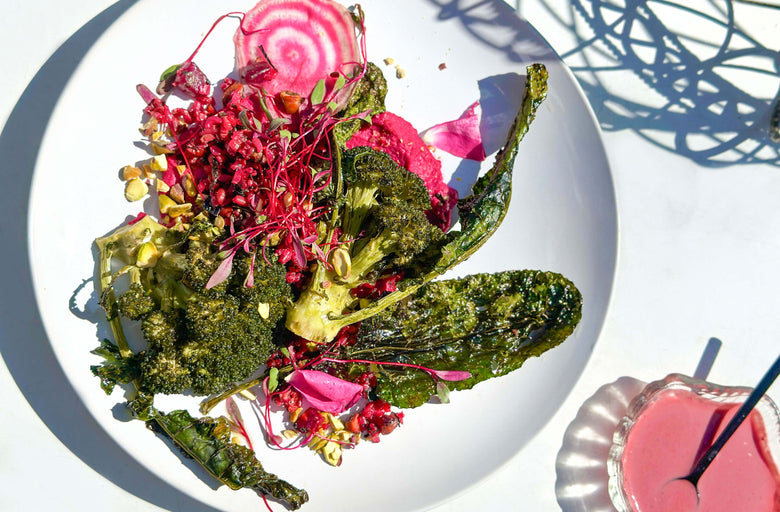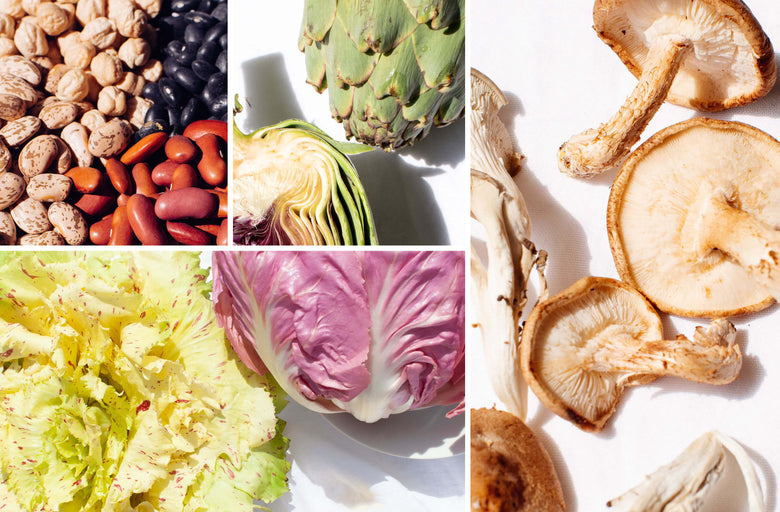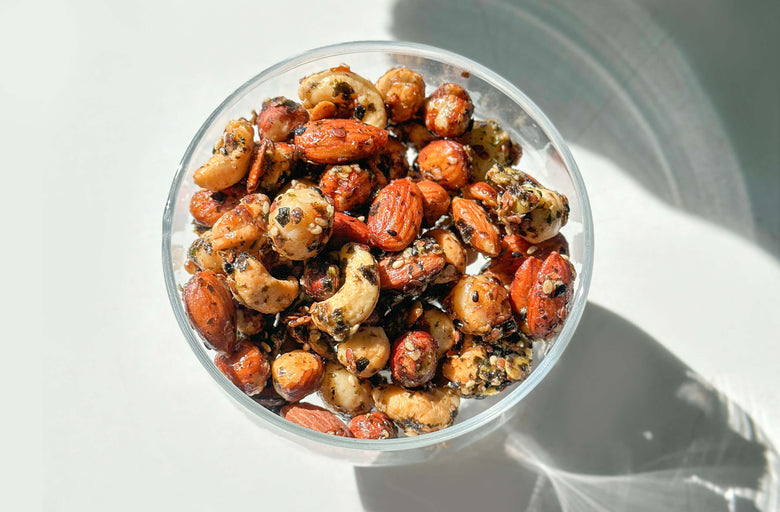Sakara Glossary is your go-to place to learn the foundation of optimal health and wellness. Here, we give you the 411 on the minerals, vitamins, and concepts that are integral to a healthier, more conscious, sexier life.
Gua sha, noun, (gwa-sah): A treatment used in TCM (Traditional Chinese Medicine) involving repeated pressured strokes over lubricated skin with a smooth-edged tool.
Origin: From the Mandarin word meaning to “scrape sand.”
If we are to judge a treatment’s efficacy by its lifespan, then gua sha, a hallmark of TCM (Traditional Chinese Medicine) whose roots predate Western medicine by thousands of years, would rank high. While acupuncture may be the more recognized, and widely available TCM practice, the benefits of gua sha (from depuffing to helping clear up congested skin to working out jaw tension to transforming texture, or, in some cases such as mine, all of the above) are just as noteworthy. And unlike acupuncture, it’s a treatment you can easily DIY. We asked Sandra Chiu, acupuncturist, herbalist, owner of elegant Williamsburg wellness enclave Treatment Lanshin, and vocal gua sha proponent, to share the how, what, when, where, why of this ancient modality.

So, what is gua sha?
It’s a Chinese medical therapy that involves gliding a smooth surfaced tool along the body to break down tension and increase the free flow of healthy circulation in the tissues. It's most commonly used to relieve pain and tension, boost the immune system and, these days, to amplify skin and tissue health in the face with facial gua sha.
What’s the difference between facial and body gua sha?
With both techniques, our goal is to release, and thus relieve, tension as a way of restoring the healthy flow of circulation. The result in body gua sha is usually pain relief, and a strengthening of the immune system. In facial gua sha the results of this improvement in tissue health can range from brightened complexion, wrinkle reduction, depuffing of the face and so many other visible changes.
Do face and body gua sha feel the same?
In body gua sha the technique of gua sha scraping is more intense, using stronger pressure and faster movements to more easily break down what we refer to as stagnation in the tissues, essentially adhesions of tight tissue that obstruct the normal healthy circulation of blood, fluid, and energy (or qi) flow. In facial gua sha the technique is significantly milder and slower so as not to create the reddish-colored marks that are left behind from body gua sha. It's also far more gentle and relaxing than the body gua sha technique.
What are some skin issues or concerns that facial gua sha can prove beneficial for?
Facial gua sha is amazing for chronically dry, dehydrated skin; aging skin characterized by reduced elasticity or sagging; and acneic or congestion-prone skin. Our clients have reported less facial puffiness, improvements in skin texture and tone, increased brightness, fewer lines and wrinkles, and improved contouring and sculpting of facial features. What excites me the most though is how helpful gua sha is for acne and congested skin. I have so many anecdotes from my patients with acne that gua sha has decreased the frequency and intensity of their breakouts and flare-ups. While it doesn't necessarily stop the acne from appearing altogether, it does help it heal more quickly and visibly reduces the redness and size of existing pimples.
Are there any skin types that should steer clear of gua sha? What about people who have had fillers or Botox?
Anyone with dermatitis or easily irritated, hyper-sensitive skin should be careful with gua sha. I don't mean people who become easily red or flushed, but those who often breakout in rashes or dermatitis-like skin irritation as a result of using new products or from their skin being touched or massaged. For these types, I recommend waiting until the skin is brought into a more stable state before trying gua sha. People who have had fillers or botox should wait at least three months after their procedure to do facial gua sha on those areas where they received injections. They can do gua sha on other areas, or at least the neck. Releasing the neck is essential for facial work and can even help to create change and improve skin health.
For those who can’t get to you or another gua sha practitioner, can you take me through how you can gua sha at home?
First, skin needs to be prepped with a hydrating mist or toner followed by a facial oil in order to create good hydration and a bit of slip. The best type of tool to use has what I call a sculpting "U" or "V" which can hug areas like the jawline, brow, and certain muscles of the neck. I also like tools that have a curve to the side edge so they align better with the curvature of the face. Then, use our gua sha tutorial as your guide. Never do gua sha over open skin (like blemishes that you’ve picked or are bleeding) and remember to not use too much pressure; don't try to no-pain-no-gain yourself with facial gua sha. It’s all about a light to medium pressure with a slow smooth stroke. Fast stroking with heavy pressure can produce the red blemishes you see in body gua sha, and is far too intense for the more delicate skin of the face.






